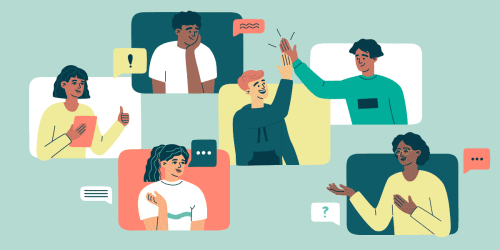Building Solidarity to Advance Equitable Family Engagement

Strong, trusting relationships between educators and families are foundational to educational equity. Indeed, students, families, schools, and communities benefit from strong family-school partnerships. However, traditional methods of family engagement can reflect narrow definitions of engagement that reproduce inequities. Success is often measured by the number of families who attend an event to hear the school’s plans instead of learning about families’ needs, priorities, or goals. Many activities, such as parent-teacher conferences and open houses, are not accessible to all families. When families cannot attend these events, due to work or child care conflicts, they are sometimes labeled as “hard to reach.” As a result, educators may view families of color, who disproportionately experience these barriers, through a deficit lens rather than viewing all caregiver participation equitably. In Just Schools, Dr. Ann Ishimaru highlights the limitations of traditional approaches to family engagement and explores the possibilities for equitable collaborations. She argues that educators can promote racial justice and community well-being by beginning with students and families, transforming who holds power, and valuing the expertise and leadership of families of color.
How Educators and Families Can Build Solidarity
In my research, I explore how educators build solidarity with families in ways that disrupt whiteness and how these efforts influence family agency in schools. Relational work takes time and cannot be reduced to a checklist. However, when educators model vulnerability by sharing who they are outside of their formal roles, demonstrate authentic care, value the contributions of families of color, and work to break down power hierarchies, there are opportunities for solidarity. I draw inspiration from Dr. Soo Hong, who theorizes teacher-family solidarity and argues that although teachers and families sometimes have competing interests, they can work as allies to support students and fuel justice-centered work.
When educators model vulnerability by sharing who they are outside of their formal roles, demonstrate authentic care, value the contributions of families of color, and work to break down power hierarchies, there are opportunities for solidarity.
Solidarity is much more than a “nice relationship.” Solidarity must be intersectional and acknowledge differences while centering reciprocity. Ultimately, solidarity is meant to advance mutual priorities. To do that, educators and families must share power and align around a common goal of helping students thrive, and educators must honors families’ expertise and ways of knowing.
Community organizing is one way to develop solidarity. Solidarity-driven codesign from the Family Leadership Design Collaborative (FLDC) is another framework for building solidarity. FLDC defines codesign as an “iterative process” in which communities come together to build relationships, identify shared challenges, and develop solutions that “push beyond the status quo.” For example, educators and families of color could come together to codesign a hiring process for new teachers based on community priorities. Through this process, communities not only build solidarity with one another, but also imagine new, more just futures. Drs. Timothy San Pedro and Valerie Kinloch summarize the need for this work: “Instead of approaching people and communities with solutions, thought of in their absence, we should be in conversation with people and communities to co-construct and implement solutions based on local knowledges and realities.”
Washington Statewide Family Engagement Center
Given the importance of equitable family engagement, I am excited to be part of the team supporting the Washington Statewide Family Engagement Center (WASFEC). In partnership with Washington Office of Superintendent of Public Instruction (OSPI), Community Center for Education Results (CCER), Roots of Inclusion, and Washington Family Engagement, WASFEC’s mission is to foster full and equitable partnerships among families, educators, providers, and communities. The main activities include providing information, training, and tools; offering regional learning opportunities; and working directly with communities to establish school and family partnerships across the state.
The work is grounded in the Dr. Karen Mapp’s Dual Capacity-Building Framework and the Washington State Family Engagement Framework report to the legislature. The belief that schools can achieve equitable family engagement by valuing families’ expertise and collaborating to create solutions is central to all efforts undertaken by WASFEC staff and partners. I am excited about the opportunities of WASFEC and look forward to collaborating with families and partners on this critical work. To learn more about WASFEC, check out the newly launched website, and don’t hesitate to reach out to our team.


